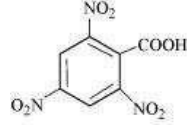An organic compound (A) contains 69.77% carbon, 11.63% hydrogen, and rest oxygen. The molecular mass of the compound is 86. It does not reduce Tollens’ reagent but forms an addition compound with sodium hydrogen sulphite and gives a positive iodoform test. On vigorous oxidation, it gives ethanoic and propanoic acid. Compound A would be:
1. Pentan-2-one
2. Butanone
3. 3-Methylbutanone
4. Propan-2-ol
Arrange the following compounds in increasing order of their boiling points:
CH3CHO, CH3CH2OH, CH3OCH3, CH3CH2CH3
The correct sequence of increasing orders of reactivity in nucleophilic addition reaction is:
1. Butanone < Propanone < Propanal < Ethanal
2. Butanone > Propanone > Propanal > Ethanal
3. Butanone < Propanal < Propanone < Ethanal
4. Propanal < Propanone < Ethanal < Butanone
Arrange the following compounds in increasing order of their reactivity in nucleophilic addition reactions :Benzaldehyde, p-Tolualdehyde, p-Nitrobenzaldehyde, Acetophenone.
1. Acetophenone < Benzaldehyde < p-tolualdehyde < p-Nitrobenzaldehyde
2. Acetophenone < p-tolualdehyde < Benzaldehyde < p-Nitrobenzaldehyde
3. Acetophenone > p-tolualdehyde > Benzaldehyde < p-Nitrobenzaldehyde
4. Acetophenone < p-tolualdehyde < p-Nitrobenzaldehyde < Benzaldehyde
What will be the IUPAC names of the following compound ?

1. 2,4,6-Trinitrobenzoic acid
2. 1,3,5-Trinitrobenzoic acid
3. 2-oxo-1,3,5-dinitrobenzene
4. None of the above
Cannizzaro’s reaction is not given by:
| 1. |  |
2. |  |
| 3. | HCHO | 4. | CH3CHO |
The compound below is treated with a concentrated aqueous KOH solution. The products obtained are:
| 1. |  |
| 2. |  |
| 3. |  |
| 4. |  |
What is the most suitable reagent for the below mentioned conversion?
1. Tollens' reagent
2. Benzoyl peroxide
3. and NaOH solution
4. Sn and NaOH solution
Match the common names given in Column I with the IUPAC names given in Column II.
| Column l (Common names) |
Column ll (IUPAC names) |
| A. Cinnamaldehyde | 1. Pentanal |
| B. Acetophenone | 2. Prop-2-enal |
| C. Valeraldehyde | 3. 1-phenylethanone |
| D. Acrolein | 4. 3-Phenylprop-2-en-al |
Codes
| A | B | C | D | |
| 1. | 2 | 3 | 4 | 1 |
| 2. | 3 | 1 | 4 | 2 |
| 3. | 1 | 4 | 3 | 2 |
| 4. | 4 | 3 | 1 | 2 |
Match the acids given in Column I with their correct IUPAC names given in Column II and mark the appropriate option:
| Column l (Acids) |
Column ll (IUPAC names) |
| A. Phthalic acid | 1. Hexane-1,6-dioic acid |
| B. Glutaric acid | 2. Benzene-1,2-dicarboxylic acid |
| C. Succinic acid | 3. Pentane-1,5-dioic acid |
| D. Adipic acid | 4. Butane-1,4-dioic acid |
Codes
| A | B | C | D | |
| 1. | 2 | 3 | 4 | 1 |
| 2. | 3 | 1 | 4 | 2 |
| 3. | 1 | 4 | 3 | 2 |
| 4. | 4 | 3 | 2 | 1 |

